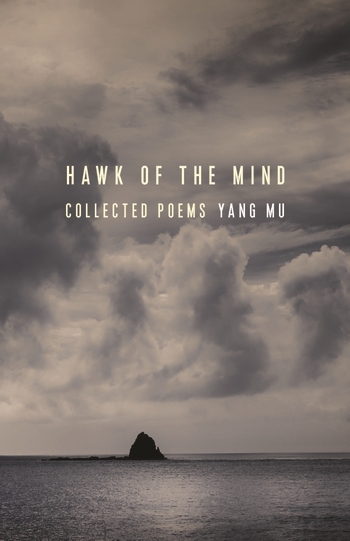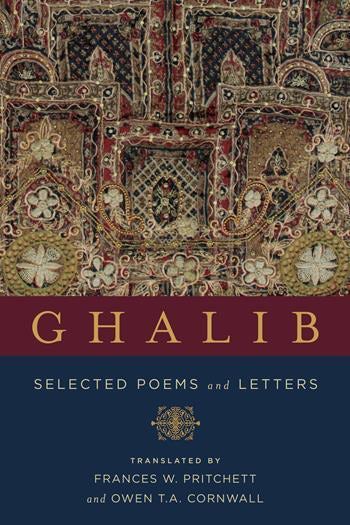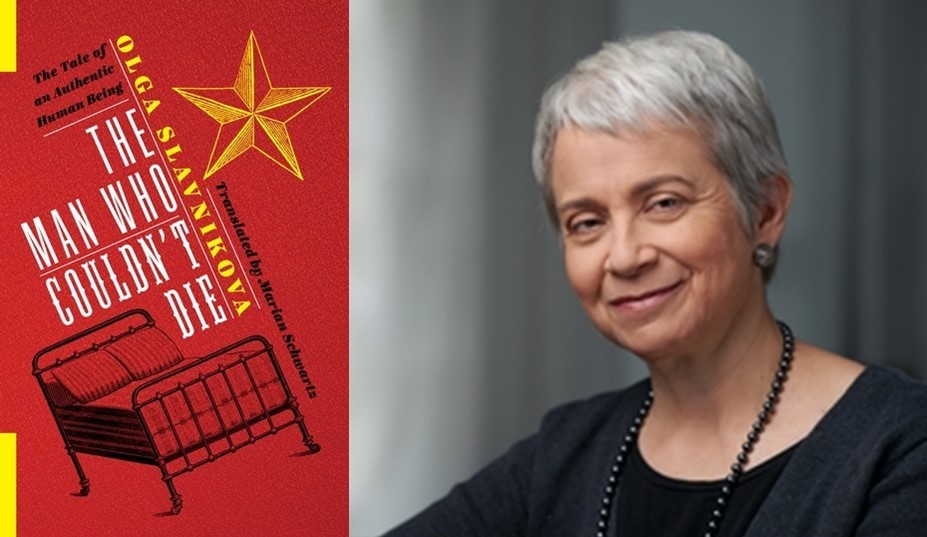The Poetic Universe Yang Mu

In celebration of National Poetry Month, this week we are featuring Yang Mu, a towering figure in modern Chinese poetry. This is the first of a two-part series written by Xiaohan Du, a PhD Candidate in Art History at Columbia University.
Remember to enter our book giveaway for a chance to win a free copy!
• • • • • •
We recently published Hawk of the Mind, a collection of Yang’s poems beautifully rendered into English by a team of distinguished translators and edited by Michelle Yeh. The translation successfully captures the evocativeness of the author’s lyrical voice, bringing readers into a poetic universe that traverses different literary traditions and historical times.
Yang’s poetic imagery stems from several sources. A native of the beautiful Hualian City in eastern Taiwan, Yang incorporates the natural scenery of his seaside hometown in his poems, with plunging cliffs and sweeping oceans as recurring motifs, serving as dramatic backdrops against which the poetic event unfolds.
Other sources of poetic motifs in Yang’s work are Chinese and Western classics, as well as music. His ease in making allusions to poetic motifs from deep within a particular literary tradition lends a certain historical gravitas to his best works. Fable Number 2: Yellow Sparrow resuscitates the motif of a yellow sparrow from a much celebrated classic of Chinese poetry by Cao Zhi (192-232). The original poem by Cao Zhi recounts a young warrior using his sword to free a yellow sparrow trapped in a net, eulogizing the worthiness of friendship in trying times. Yang takes the motif of the yellow sparrow from this ancient poem and refashions it into a tale that is permeated by a keen awareness of time and history, and yet is still unmistakably a work of modern poetry.
Fable Number 2: Yellow Sparrow
He comes back from the millet field
and relates a shocking incident to me –
his long, dabbled hair unbound, his colored robe
in disarray from tumult, his wrinkled face
tracing dynastic changes
in his left hand a banner held upside down—
no entwined dragons and phoenix bells
only a faded embroidery of tortoise and bat—
in his right hand, a sword
dustless and bright
He comes back
from the millet field, from the ancient past—a swordsman in rags
secretly moving through darkness and light
with the memory of an old tale—
about a yellow sparrow
caught upside down in a windy net:
He’d once been a buoyant youth from our human world, smartly
dressed
equipped with bow and arrows and long sword
dashing on his stallion past a murmuring stream in summer heat
and—before he was aware—into a desolate millet field
on a windy day…
It was in the ancient past
He saw a vengeful yellow sparrow
struggling in a net
The wind sighed in all trees, the ocean
churned in the distant future
He got off his horses and cut the net loose with his sword
The yellow sparrow catapulted into the vacant sky
sending tremors through his heart and soul. Instantly
his hair turned gray
his blood paled, his robe was torn
to pieces, his bow lost
arrows scattered, the color of the banner changed
Only the sword in his right hand, a sword
dustless and bright
He comes back from the millet field
and relates a shocking incident to me
(Yeh and Smith)
The historicity of the theme becomes seamlessly woven into a tale in which time is cyclical; for example the ending “he comes back from the millet field/ and relates a shocking incident to me” is a repetition of the very beginning of the poem. This formal repetition echoes the cyclical nature of the tale. As the temporal distance between the narrator, the reader, and the warrior collapses once and for all, the reader is left slightly vertiginous in this poetic world where the melancholic warrior trudges on, in a landscape that seems endless. The author with his profound understanding of the Chinese literary tradition was able to harvest poignant motifs from it and furthermore transform them into something quite different and refreshing to the modern reader. Yang is known to share T.S. Eliot’s view on the meaning and significance of tradition for poetry-writing:
“Tradition is a matter of much wider significance. It cannot be inherited, and if you want it you must obtain it by great labor. It involves, in the first place, the historical sense, which we may call nearly indispensable to anyone who would continue to be a poet beyond his twenty-fifth year; and the historical sense involves a perception, not only of the pastness of the past, but of its presence; the historical sense compels a man to write not merely with his own generation in his bones, but with a feeling that the whole of the literature of Europe from Homer and within it the whole of the literature of his own country has a simultaneous existence and composes a simultaneous order. This historical sense, which is a sense of the timeless as well as of the temporal and of the timeless and of the temporal together, is what makes a writer traditional. And it is at the same time what makes a writer most acutely conscious of his place in time, of his own contemporaneity.”
—“Tradition and the Individual Talent” 1919
The fascinating interweaving of multiple temporalities in the Yellow Swallow testifies to
Yang ’s poetic vision, that poetry as a literary genre is particularly good at bringing the reader through layers of historical time and space while evoking transient moods and amorphous sentiments.
In the next post, we will explore another fascinating aspect of Yang Mu’s work—his ability to allude to the Western literary tradition and the myriad poetic ambiences he was able to create from those allusions.
Categories:Translation
Tags:Chinese Poetry







